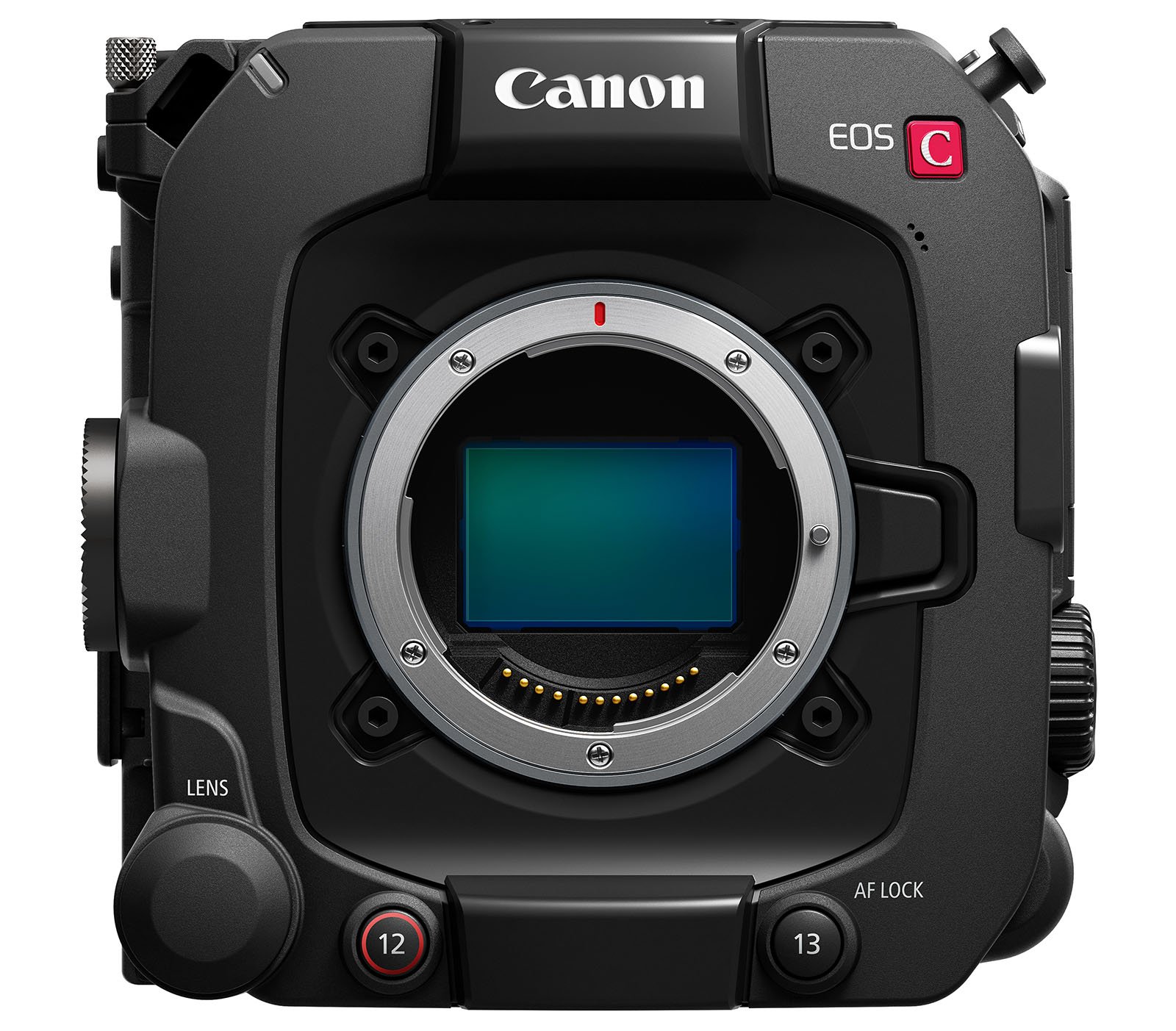Tech
Canon’s RF-Mount C400 Cine Camera Has a New 6K Full-Frame Sensor
Canon has significantly bolstered its support of the RF mount for cinema applications with the debut of the new Canon EOS C400 cine camera.
The new 6K full-frame C400 is just Canon’s third RF-mount cinema camera, joining the EOS R5C launched in 2022 and the EOS C70 that released in 2020. However, unlike those two cameras, the EOS C400 sports a more traditional, boxy cinema camera design, ripe for system expansion and rigging.
Regarding features and target audience, the C400 sits between the C300 Mark II and C500 II. The C400 is about 10% smaller than the C500 II, but doesn’t want for ports and expandability. The C400 has a lens power terminal, ND filter buttons, 3G-SDI and 12-SDI out, USB-C ports, a headphone jack, two mini XLR inputs, a full-size HDMI port, time code sync, and return terminals, and numerous screw holes for attaching accessories like the new top handle (included) and third-party grips, cages, and mounts. The C400 is built with film and live production applications in mind, so it has all the terminals required for broadcast situations.
At the heart of the C400 is a full-frame 6K CMOS back-illuminated stacked image sensor, an all-new design for Canon. The sensor has a triple-base ISO (800, 3,200, and 12,800), which promises improved noise performance and dynamic range, especially in low-light scenarios. Canon says that the sensor offers up to 16 stops of dynamic range in optimal conditions.

Another benefit of the new sensor is support for Canon’s Dual Pixel AF II. The back-illuminated sensor design allowed Canon engineers to include additional wiring and improve the chip’s light-gathering performance, enabling more of the sensor to be available for autofocusing. The autofocus area covers the entire image sensor. The new sensor design also promises faster readout speed and improved 4K image quality from 6K oversampling.
Regarding video modes and recording options, the C400 records 6K full-frame footage at up to 60 frames per second in 12-bit Cinema RAW Light. By changing the sensor mode, additional quality and speed are possible, albeit at a reduced resolution. The camera can shoot 4K RAW video at up to 120p and 2K RAW at up to 180p. These modes all rely upon the latest iteration of Canon RAW Light, which offers three different recording modes that deliver different file sizes and quality levels.
Additional recording options include the Canon-developed XF-AVC codec, which can be recorded in 10-bit 4:2:2 with oversampling and frame rates up to 120p. This codec has broad industry support and is compatible with popular video editing platforms. Canon is also adding a pair of new recording codecs in the C400: XF-AVC and XF-HEVC S. These record in MP4 and preserve metadata.
The Canon EOS C400 includes a CFexpress (Type B) card slot and a secondary SD slot (UHS-II). It can simultaneously record RAW footage to the CFexpress card and proxy footage to the SD card.
The EOS C400 is not only suitable for typical productions and broadcasts but has also been designed for virtual production. It can provide frame-by-frame metadata in real-time, enabling full support of virtual workflows. It is also ready for 180-degree VR shooting and works with Canon’s RF 5.2mm f/2.8 L dual fisheye lens.
Alongside the C400, Canon has introduced the new Mount Adapter PL-RF. This enables C400 users to work with a wide range of PL mount lenses and is compatible with Cooke i/Technology metadata communication protocols.
Pricing and Availability
The Canon Cinema EOS C400 full-frame RF mount camera will be available in September for $7,999 and comes with a redesigned top handle and a detachable LCD monitor. The PL-RF mount adapter will also arrive in September, retailing for $1,599.
![]()
PetaPixel’s Take
The Canon EOS C400 has arrived at a critical time for Canon. While the C400 has been in the works for years, well before Nikon announced its acquisition of the cinema company RED, it’s imperative that Canon maintains its historically strong commitment to cinema cameras and lenses. While RED cameras come in RF mount versions, Canon has much to offer videographers on the camera side, too.
The R5C has proven a popular run-and-gun style cinema camera, and the C70 is a compelling Super35 camera. However, the new EOS C400 is Canon’s first full-frame video-only RF camera, ready to take full advantage of Canon’s RF lens lineup, which includes the renowned CN-R primes and impressive new RF 24-105mm f/2.8 L IS Z lens, which while great for stills is built with hybrid applications in mind. Speaking of hybrid lenses, the 35mm f/1.4 RF lens Canon announced today is the first in a series of new hybrid prime lenses. Surely, a sign of things to come.
Another fascinating aspect of the C400, beyond how sorely it was needed in Canon’s Cinema EOS system, is the newly developed full-frame 6K image sensor. It is a stacked, not global, image sensor, which is rather interesting. While many cinema cameras are transitioning to global sensors, they remain challenging to engineer, and Canon has yet to crack the code in a commercial product. The EOS R1 doesn’t seem poised to pull it off, either.
That said, a new stacked sensor that promises faster readout, improved image quality, and features a novel triple base ISO? There’s a lot to like there.
It remains to be seen who will rush to implement the C400 into their video workflows, but there’s no question that Canon has reiterated its commitment to Cinema EOS with its newest camera.
Image credits: Canon







:max_bytes(150000):strip_icc()/roundup-writereditor-loved-deals-tout-f5de51f85de145b2b1eb99cdb7b6cb84.jpg)


